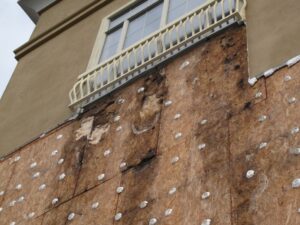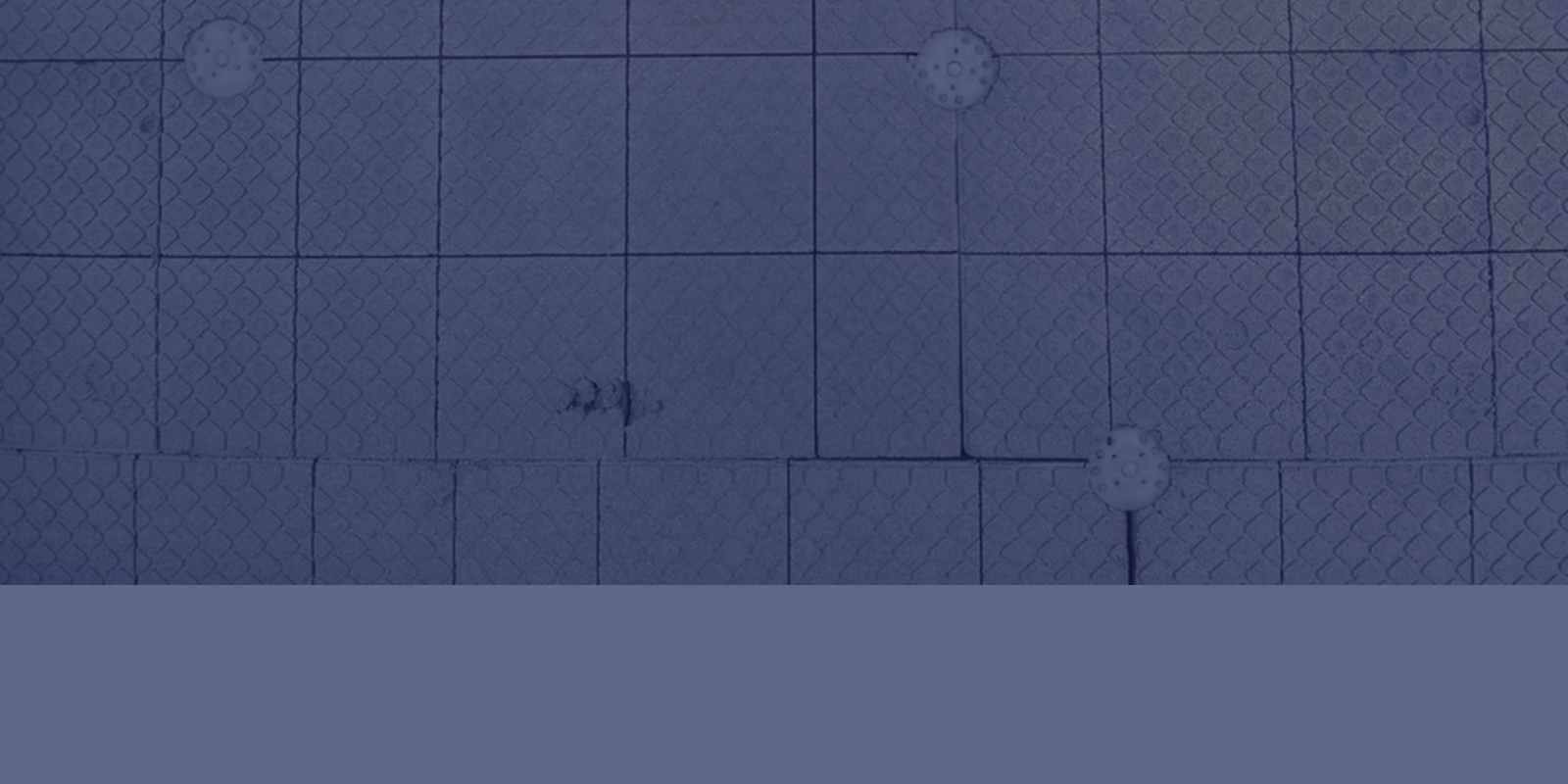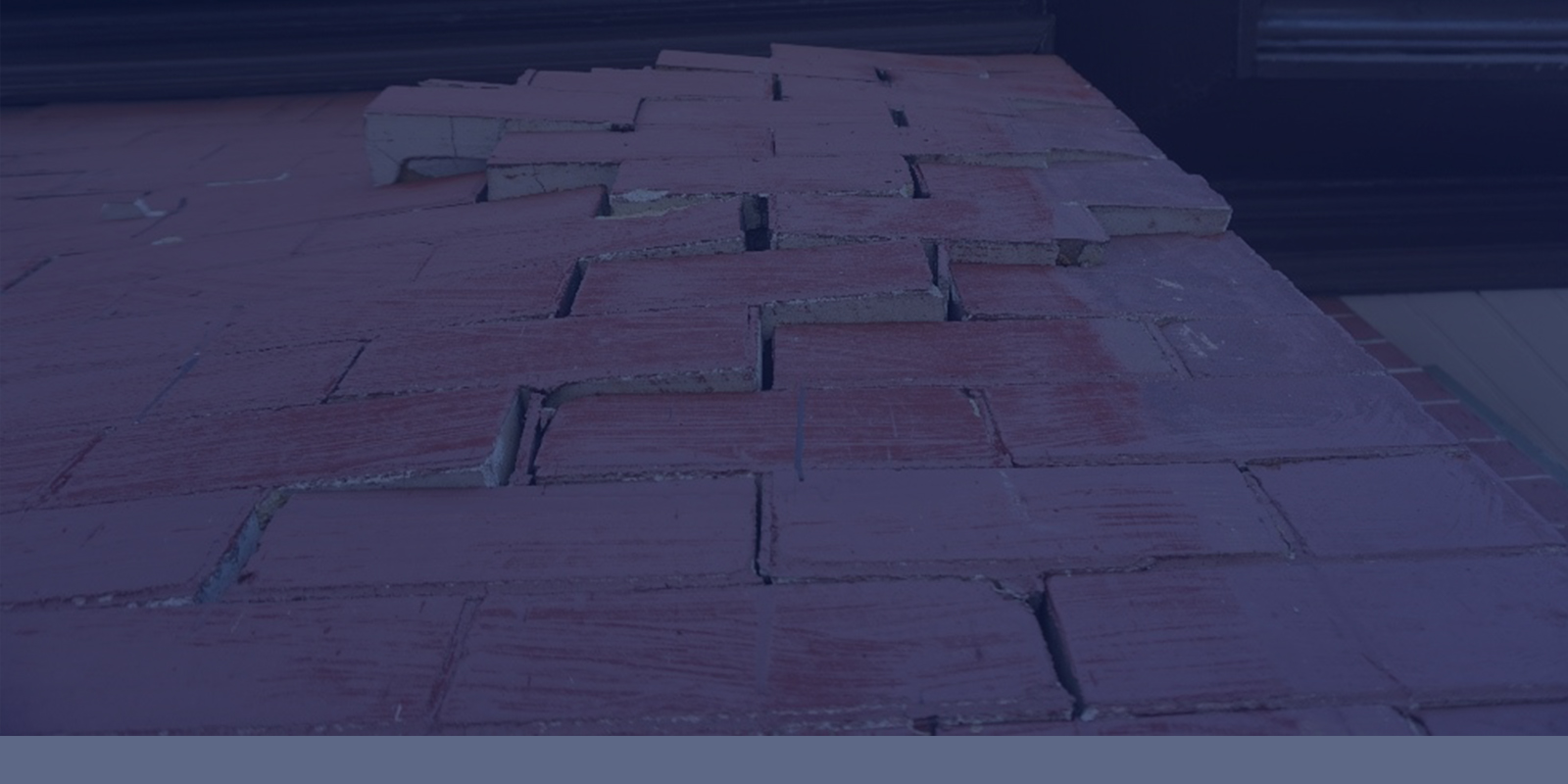An Exterior Insulation and Finish System (EIFS) is an exterior wall cladding assembly that consists of a foam insulation board covered with a base coat and an exterior polymer finish coat. EIFS is a “synthetic stucco” product, which is typically applied as a cladding over sheathing and stud framing or a masonry substrate.
Historically, there have primarily been two types of EIFS: barrier systems and systems with an added secondary drainage plane. Barrier systems rely on the integrity of the exterior finish coat to prevent moisture intrusion into the wall assembly. As such, even small errors during the installation of a barrier system can allow moisture into the assembly. Once moisture enters a barrier assembly, there is no feasible path for escape, often resulting in water becoming “trapped” within such an assembly. Figure 1 shows damage to wall sheathing due to moisture intrusion into an EIFS barrier system.
By way of contrast, drainage plane EIFS assemblies include a drainage plane with a water-resistive barrier and are designed to drain any moisture that does penetrate the EIFS back to the exterior. However, deficiencies in flashing and/or the WRB in a drainage plane EIFS system can result in moisture penetration and damage.
EIFS with drainage became common in the early 2000’s. Therefore, an EIFS assembly constructed before the early 2000’s is likely a barrier system and one constructed after the early 2000’s is likely a drainage plane system.

Figure 1. Barrier system EIFS with damage below window
Nelson’s professionals are experts in assessing the efficacy of all types of exterior wall systems, including EIFS. Nelson’s team often assesses water intrusion through these exterior walls, and other building envelope systems, which have been subject to natural perils and/or may have been improperly designed, constructed, or maintained.

